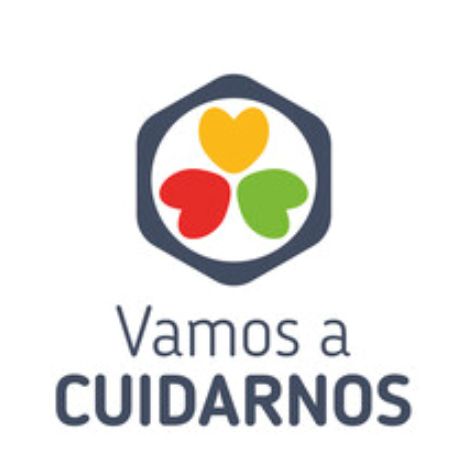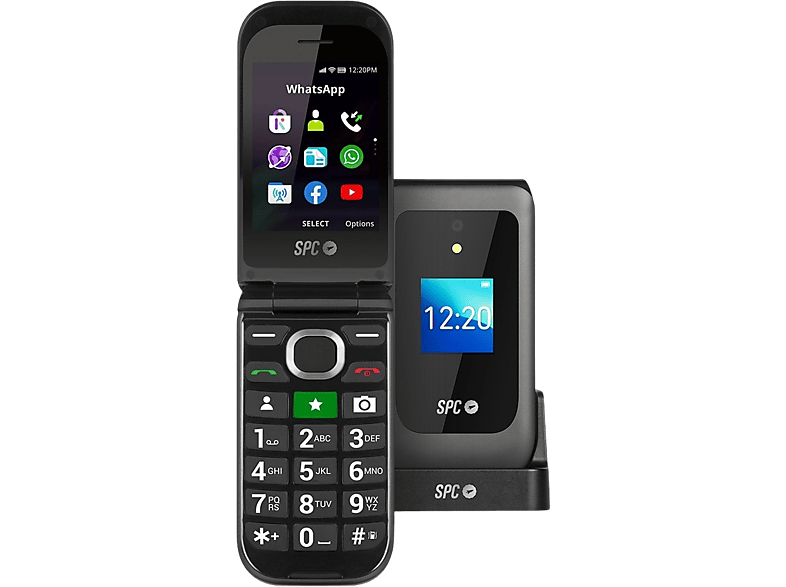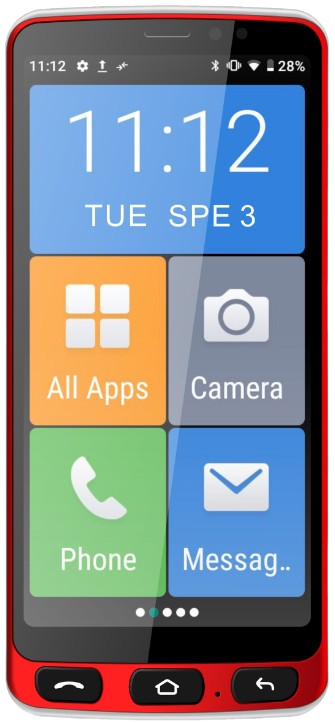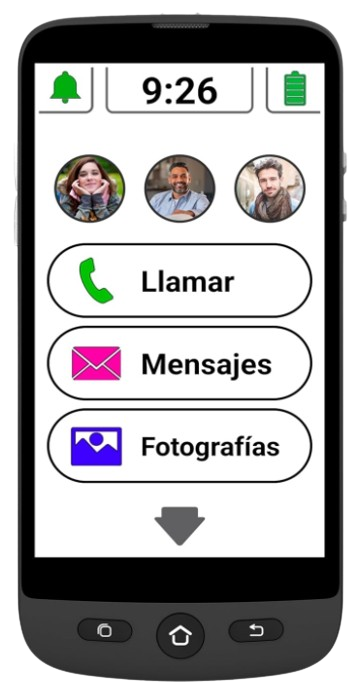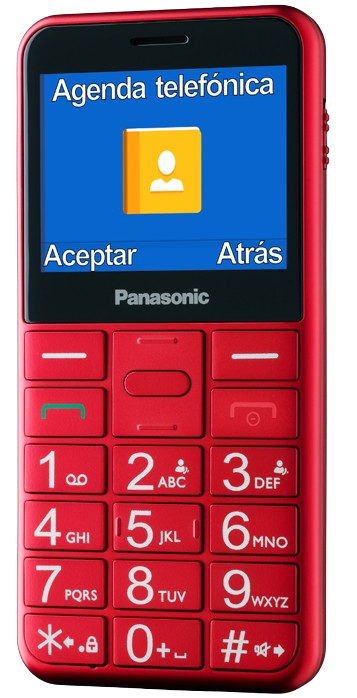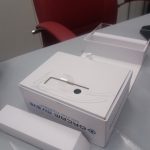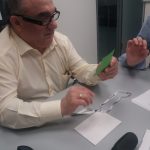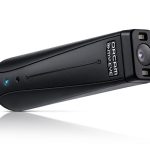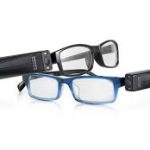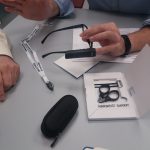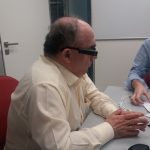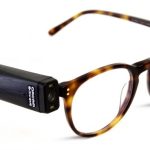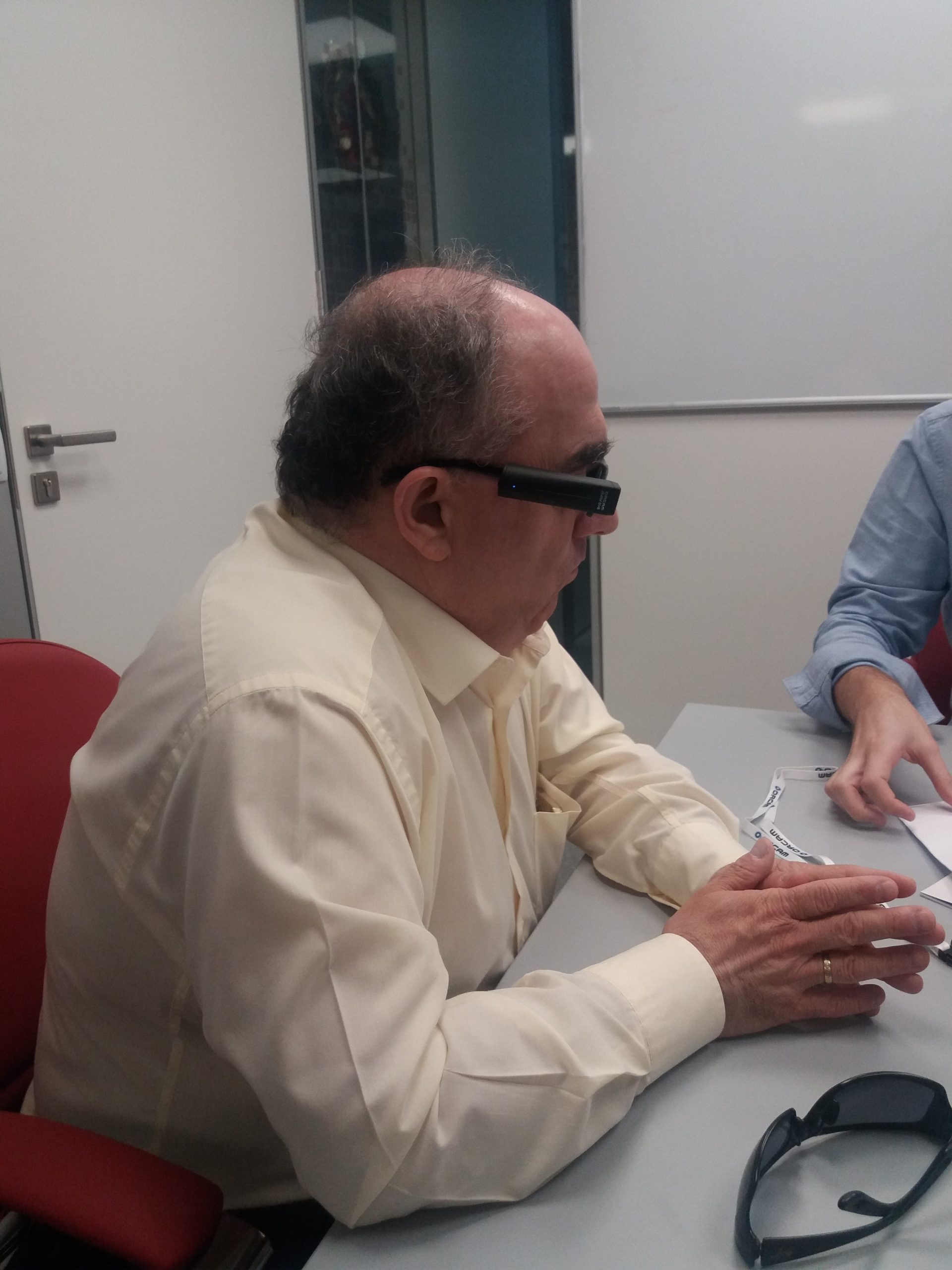We have had the opportunity to test the Orcam Myeye 2.0 device during a visit to the offices of its distributor in Spain to tell you in detail how it works.
The device is sold in a cardboard box containing the following items:
- Orcam Myeye 2.0 device
- Adapter for all types of glasses by means of flanges and magnets
- Short manual in printed text
- String to carry it hanging
- Charger
- Mounting Tool Kit
- Funda

Technical Specifications
The device has an integrated 3.7 VDC and 320mAh battery, an integrated 13 Mega-pixel camera, a small integrated speaker and a touch sensor, in addition the device has a memory system and internal processing that acts as the brain of the system, enabling the detection and identification of images.
The estimated battery life is 2 hours at full power and the charging time is 40 minutes for a full charge. This charging is done through a USB connector and allows you to use the device and charge it at the same time.
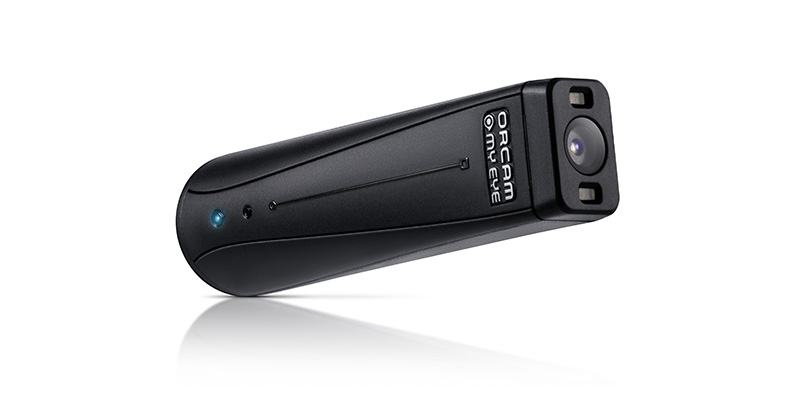
Starting to use the device
To make the first use of the device, we recommend accessing the video tutorials at the following link since there is no manual in Braille and therefore for people with vision difficulties the manual that is included is of little use.
https://www.orcam.com/es/online-tutorials/
However, it should be noted that the use of the device is quite intuitive and the user can become familiar in a short time with the basic gestures that allow it to be used.
The device has two ways of interacting with the user. On the one hand, it has a proximity sensor that detects when the finger approaches to control the different options by tapping. On the other hand, the user receives voice instructions through a small loudspeaker directed towards his own ear.
As general functionalities, it should be noted that the device reads the time when you bring your wrist in front of the camera and gives information about the battery level when it reaches different discharge points.
The most suitable for correct use is to place the device by means of the fixing system to one of the temples of the glasses.

Reading texts
The device reads text printed on paper or from mobile and computer screens, as well as text from posters and signs if the focus and lighting conditions are correct.
In the case of texts in newspapers and books, it is capable of breaking down by different pages and even by different columns to be able to read in an orderly way.
To proceed to a reading, the text must be placed at a distance of between 30 and 40 cm in front of the camera and the reading must be activated by a touch. Once the text is identified, I can release the paper and the device will begin to read the previously identified text by voice.
The device allows the control to stop the voice by placing the palm of the open hand in front of the camera and allows in turn to speed up or slow down the reading.
In general, reading is good with printed texts during the tests carried out, being optimal in cases where the texts present a good contrast and the lighting conditions are adequate. In any case, the device incorporates artificial lighting to improve identification in cases where ambient lighting is insufficient.
If you want to read a specific area, you can point your finger at the text area to read a specific line. The device indicates through voice instructions if it requires better focus or does not identify the text.
Reading posters and texts at a greater distance is highly conditioned by how the text is approached and by the ambient lighting conditions.
The only thing we miss at this point is that the device allows handwriting identification.
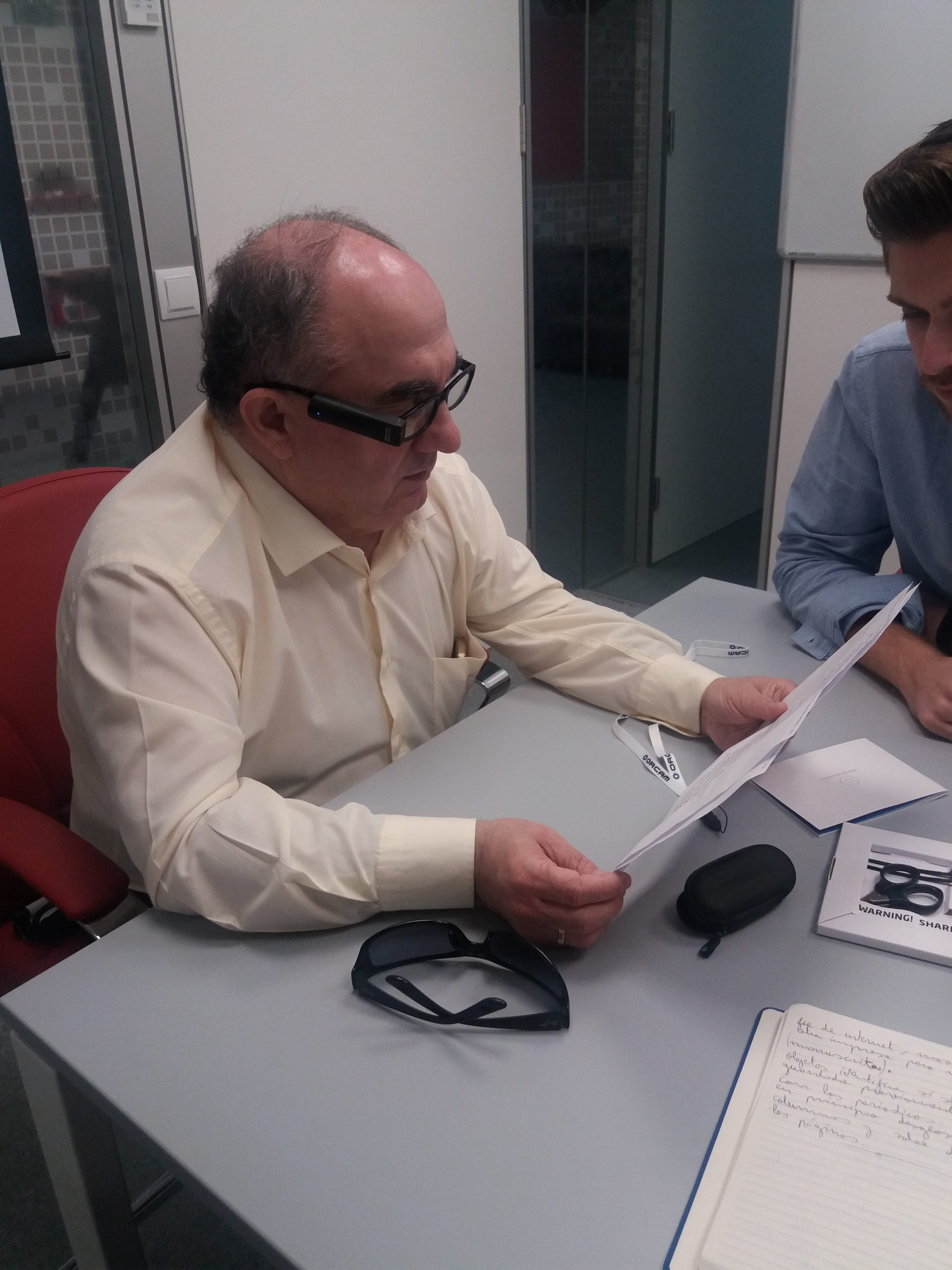
Face recognition
The Orcam device has the ability to detect human faces and associate them with a certain name to be remembered once these people appear before the camera.
When Orcam identifies a face that it does not have stored in its memory, it first tells us if it is a man or a woman, and if it is previously recorded, it tells us the name of the person.
To save a face you have to keep your finger on the device. After a pause it will inform us that it is proceeding with the face identification. Then take several image captures during which it is advisable to move to take various perspectives of the person. If the face has been correctly identified, then it asks us to say the name of the person for storage in memory.
This functionality has been tested satisfactorily together with our volunteer Andrés.
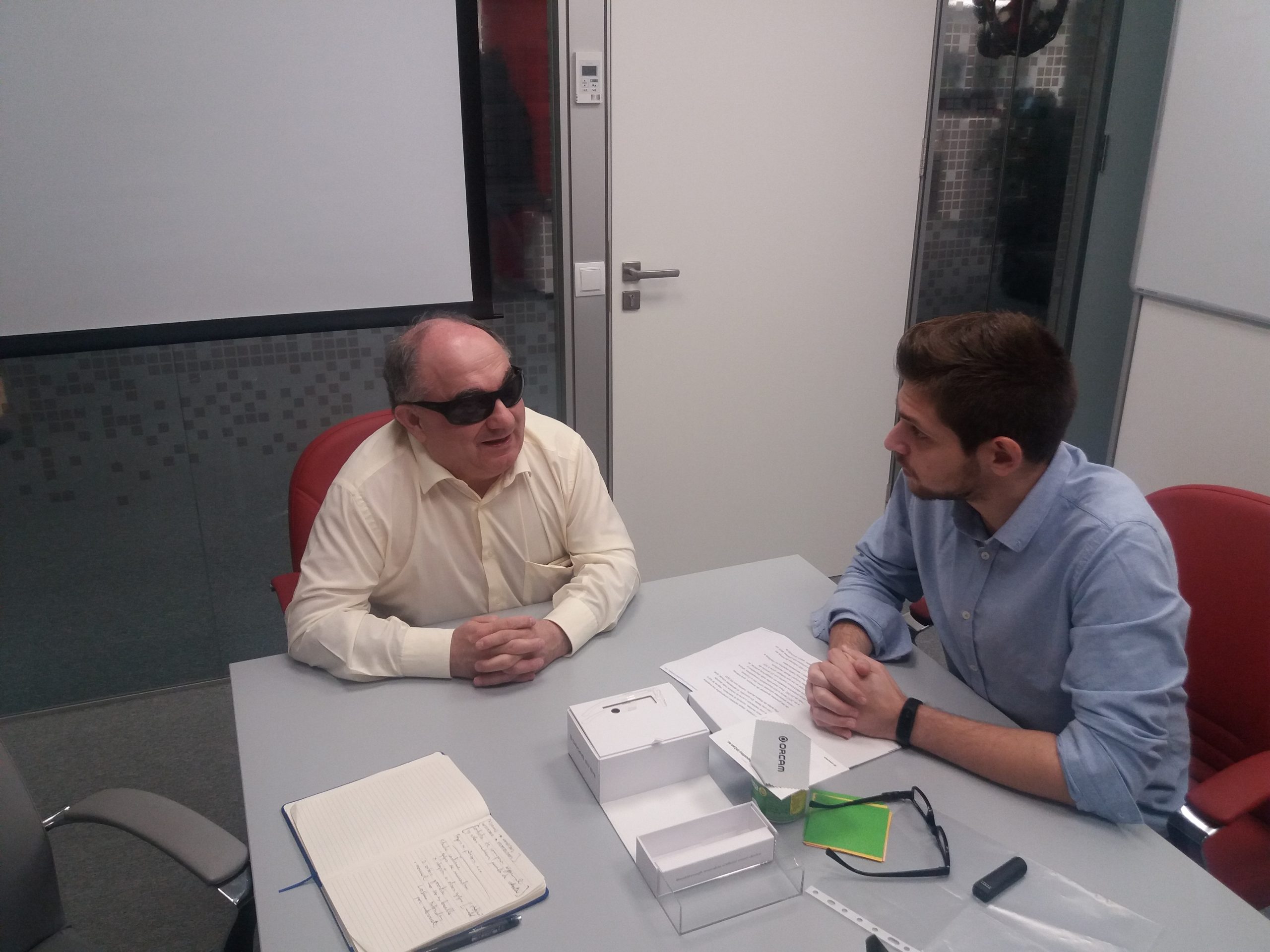
Color identification
As for color identification, we have tried different colored post-its. For recognition, you have to leave your finger on the different colored objects or surfaces to identify them. In general this feature works well, depending on the hue of the identified color on the light striking the surface.
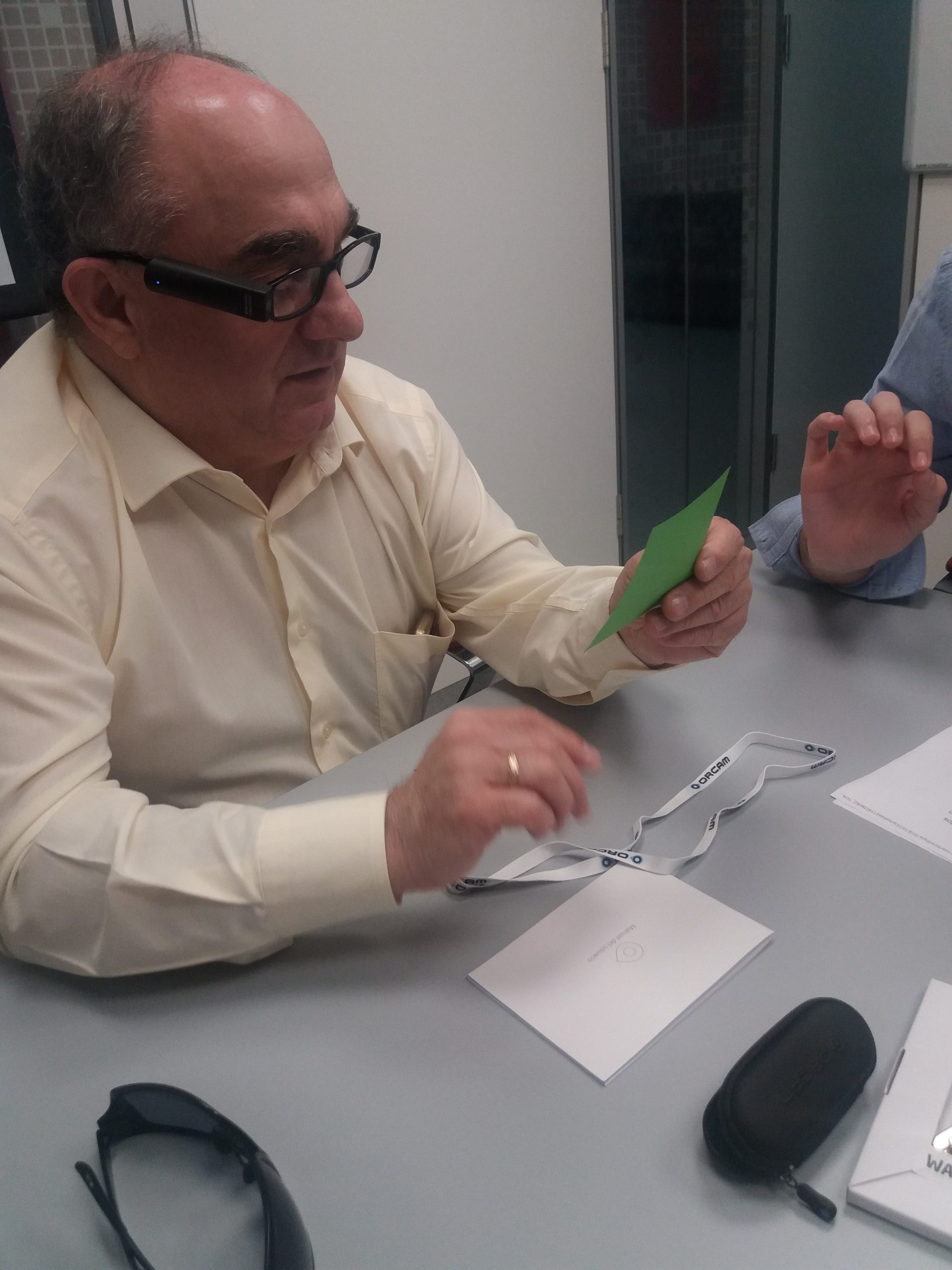
Product identification
Regarding the identification of products, a process very similar to that of the identification of faces is followed. The system does not have a bank of previously memorized objects, but in order to recognize a product it is necessary to previously carry out a memorization process. In this sense, the tests gave good results with previously memorized objects that could be recognized. However, the process of memorizing products encounters greater difficulties when it comes to memorizing certain objects, which is why it requires good lighting conditions as well as taking images from different perspectives of the object.
The device allows banknote identification. In this case, we have been able to easily identify € 5 and € 10 bills.
Conclusions
ORCAM is a high-tech product that works autonomously and whose best functionality is found in reading printed texts. At the same time, it presents another series of interesting characteristics such as the identification of faces, products and bills.
In general, it is a product that behaves reliably and opens a door beyond the concept of mobile applications for text and object recognition.
That said, it is a product with a high price compared to other existing solutions on the market and therefore the best value is the possibilities that it previously offers in any of the points of sale or distribution.
Highlights
- Face and text recognition is convenient and reliable
- It is an easy-to-use, intuitive and not too bulky device
- Its operation autonomously without the need to be linked to phones or other additional devices
Improvement points
- We recommend incorporating a bank of commonly used objects previously memorized in future versions
- It is a high investment so it is advisable to know the product well and even carry out a test session through the distributor to know in depth how the product meets the needs of the user.

